
fat-free doesn't necessarily mean guilt-free
Fat-free foods
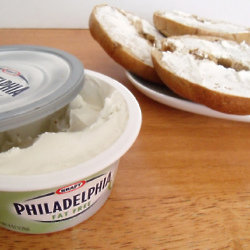 Before being lured to grab the 'fat-free' option, read the labels (Picture by iateapie)
Before being lured to grab the 'fat-free' option, read the labels (Picture by iateapie)Now there, I can almost see you frowning at the screen. Just hear this out - because it is fat-free doesn't mean it is calorie-free. Remember the fat-free Muller yoghurt commercial? “It’s sooo creamy! And it’s fat-free!” But what exactly gives that lovely taste and the texture of creaminess and silkiness? When you take fat out of foods, something has to replace the flavour and the texture of creaminess and that something is usually added sugar and sodium. Sugar is then converted into fat and is stored in your body like the other fats until it is burned off as energy. Studies show that in some cases, fat-free yoghurts that have high sugar content tend to have more fat than the regular natural yoghurt. The right kinds of fats are actually essential to a healthy diet, providing flavour, reducing the risk of heart disease, and even keeping your moods up. Furthermore, fat can help you feel full; many foods become less satisfying without it, which may lead you to eat more at your next meal. Also, it’s no surprise that many people feel like they can eat more because it doesn't contain any fat but most of the time the calories are the same.
Skimmed milk
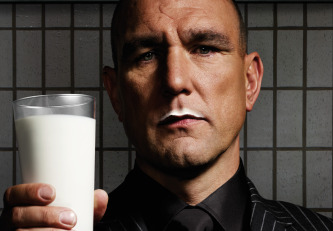 Vinnie would choose whole milk or at least semi-skimmed. Do you think he became strong by drinking skimmed milk?
Vinnie would choose whole milk or at least semi-skimmed. Do you think he became strong by drinking skimmed milk?Although guzzling full-fat milk has been demonised in recent years, research shows that whole milk could be a better choice than skimmed. First of all, whole milk only contains around 4% fat per 100ml, a long way from the 20% plus generally required to be deemed ‘high fat’. While skimmed milk only contains 0.1% fat, unless you drink tons of the stuff, switching from whole to skimmed milk won’t be a huge difference to your overall fat intake. In addition, skimmed milk is far less nutritious. It is because the cream contains the fat-soluble vitamins A, D, E and K. To top things off, research by Cardiff University revealed that full-fat milk could actually boost metabolism and help you burn more calories, while lowering your risk of heart disease to almost none.
Salads
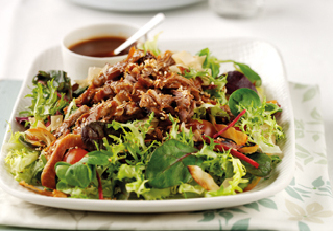 salad is good but it's best if you make it yourself
salad is good but it's best if you make it yourselfYes, probably the widest choice of a meal amongst the ladies. Some restaurant chains have salads on their menus that top out at 1,000 calories! The thing is, many salads are packed with high calorie add-ins, such as cheese (100 calories in four dice-sized cubes), bacon bits, nuts, avocado, creamy dressings, and croutons. And what about the mighty dressings? Most of them consist of oil, butter, mayonnaise and other calorific and fat-laden sauces. So, are you still ordering that salad or perhaps choosing something that really IS healthy and filling?
Energy bars
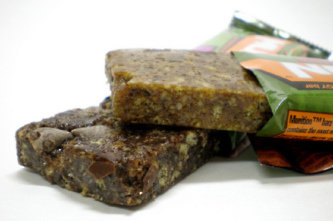 How do you think, why are energy bars called like that? *hint* it's not because they have very few calories (picture by TheFoodJunk)
How do you think, why are energy bars called like that? *hint* it's not because they have very few calories (picture by TheFoodJunk)Just because they come in fancy packaging with health claims doesn't mean they are healthy. Many are full of white flour, sugar and some can be high in saturated fat and contain little to no fibre. The calories can add up as well with some bars weighing in at 300-400 calories a bar. I have to mention that there really healthy and nutritious, but you won’t find it in the confectionary aisle. The key is to always read the labels.
Granola
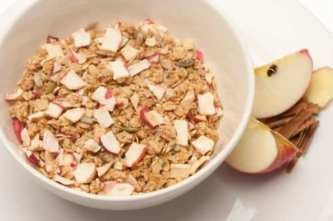 Don't be too generous when pouring granola into your bowl
Don't be too generous when pouring granola into your bowlAlthough granola may contain some healthy foods such as nuts and oats, it is typically very high in sugar and contains little fibre. A typical bowl (100g) of granola can have as much as 600 calories and 35g sugar which is a staggering one third of both you calorie and sugar allowance! Add milk or yoghurt and you have a breakfast meal that could easily become a strong contestant for lunch.
Breakfast cereals
 Thumbs up for good ol' Weetabix!
Thumbs up for good ol' Weetabix!Not all cereal is the same. Naturally, some are healthier than others. Choose the wrong box and you might as well start your day with a slice of cake, as some cereals are high in sugar and fat. The main ones to watch out for are your sugar-coated or ‘frosted’ kids’ ones, along with some of the nutty, oil-packed granolas (read above). So always check the label. Not that we need to skip the cereal aisle altogether – experts agree that tucking into a bowl of porridge or any other wholegrain cereal such as bran flakes or Weetabix is actually a very healthy breakfast. Naturally low in calories and high in fibre, these will help keep you fuller for longer and ward off mid-morning snacking.
Smoothies
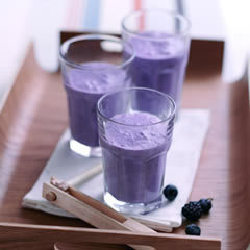 ...Just have that chocolate bar instead. No big difference.
...Just have that chocolate bar instead. No big difference.It is a fruit serving, isn’t it? The main ingredient is fruit juice, which adds calories without providing any of the good-for-you fibre you get from the fruit itself. Most smoothie places typically use sugar-loaded sherbet or frozen yogurt as a base and then add additional sugar. The average smoothie provides 400 to 600 calories, but don’t satisfy you like a meal due to the fact that liquids are digested faster than solids. Grab an apple, a pear, a handful of grapes or a banana instead – you’ll get more dietary fibre, less sugar and feel fuller for longer. Oh, and your teeth will thank you for that.
Diet drinks
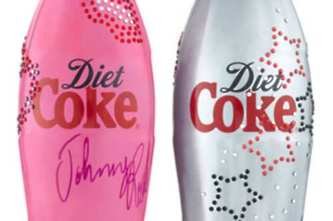 They sure do look fancy, don't they?
They sure do look fancy, don't they?They seem like a straightforward way for soft drink lovers to cut calories, but some experts think diet drinks could actually sink your good intentions of weight loss. Research is stacking up to suggest that while the artificial sweeteners they contain can convince the taste buds they’re consuming sugar, the brain are not tricked so easily. When your brain recognises the sweetener alert, it send signals to your body saying there’s taste but no expected calories. Your body then goes on a calorie hunt, making you feel hungry and eating more. That is why several US studies seem to show that consuming sweeteners can make people more likely to pile on weight, than reduce it.
Honey
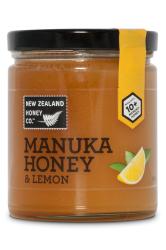 A teaspoon or two won't do any harm
A teaspoon or two won't do any harmMany of us drizzle honey thinking it’s healthier and more ‘natural’ than sugar – but we’re wrong! Both contain similar high levels of glucose. Honey is denser so one tablespoon actually contains more calories than the same sized spoonful of granulated sugar. Remember – everything’s in moderation as too much of good can become bad.
Toma Sukyte - for Female First
Tagged in Health food Diet Food & Drink Food Advice

